- What John Lennon Thinks of Donald Trump - November 14, 2016
- The Meaning of Fun: The Paul is Dead Rumor - February 3, 2016
- BEATLES-STREEP-SHEA SHOCKER: IT’S NOT HER!!!! - August 13, 2015

If only you were here to confirm or deny…
DEVIN McKINNEY • Mike asked what I thought of the “Revolution 1” Take 20 RM1, so called, that’s been burning up Beatleland. I’ve been loving and chewing on this piece of mystery meat since the weekend, and at first assumed it was genuine. Why not: Remember the stripped-down masters of those four Sgt. Pepper songs that appeared almost a year ago? Those were just as crisply digitized, just as thrillingly intimate in their four-track nudity, and no one has credibly claimed they are not genuine. So I figured it was more than plausible that this equally real-sounding outtake came from the same place.
The question of fakery, frankly, didn’t occur to me—until today when Professor Ben and Policeman Mike weighed in. And they got me wondering; doubting and wondering. So I’ve spent the last couple of hours listening again, through headphones, to a FLAC (lossless, uncompressed) version of this “discovered” Take 20 RM1, and reviewing Disc 2 of From Kinfauns to Chaos, which contains Yoko’s personal recording (with her own, less than welcome commentary) of the Beatles’ studio session of June 4, 1968, in which the Take 18 of May 30 was overdubbed and mixed to create Take 20—supposedly the very recording we now have before us.
This is only the second time I’ve ever listened to the Kinfauns disc. In the early going, Tracks 1, 2, and 8 are the most instructive to hear, with the most substantial excerpts from the uncut, undubbed “Revolution 1.” Yoko is talking over the top of the music, whispering into her cassette recorder as mixing and discussion is heard in the background. (In some passages, the Beatles are heard attempting vocal, guitar, or organ overdubs, or jamming—often hitting on a theme that resembles “Watching Rainbows” from the Get Back sessions). But tuning out Yoko’s talk, we can hear enough of the original Take 20 to make some fair surmises.
The studio chatter at top and bottom is definitely genuine, and to my knowledge has not been bootlegged before.
Near the end of the “new” RM1 (about 9:40), Yoko mutters, “Maybe—it’s not that”— followed by what sounds like a “dirty” George Harrison saying, “It is that!” This is on the Kinfauns disc and is therefore genuine. “It is that” and the whole “suite” of audio muck, static, mumbling, radiosong and Yoko maunder from the end of “Revolution 9” is there; my guess is that she and John recorded this at home and brought it in, fully intending to add it to the track. But this stuff has never come out except in the Kinfauns low-tech, chat-cluttered, off-line, monitor-mix version. Where did the “fakers” get hold of what sounds like the pristine original?
Lewisohn records that John took away “a rough mono remix” of Take 20 at the end of the day, which the EW.com report linked by Ed speculates might be the source of the leak. But what we’re hearing is far too fine to have come from that long-ago source, which would have been low-fi to begin with. (Acetates were only meant to be played a few times before becoming unlistenable.)
I’d never realized that the low rhythmic mutter under Yoko near the close of “Revolution 9” is John muttering, “gonna be all right.”
Many of the sounds—John’s increasingly frenzied series of Right’s, and his grunting, “stabbing” sounds—are likewise familiar from “9,” but here they are stripped down and isolated. Could ProTools have removed so much of the audio mess? I don’t know enough about ProTools to know, but I’ve heard other products of that editing system and there are almost always the faintest “ghosts” of suppressed tracks lurking in the background. None of that here.
My own largest doubts centered around the most prominent and consistent of the aural additions—the air-raid siren, perhaps from guitar feedback or a preexisting sound effects tape, repeated at intervals; and what’s been identified as a Beach Boys-styled “mama-dada” vocal refrain in the long freak-out ending. Though he does mention “plenty of feedback” on the original Take 18, Lewisohn says nothing about the siren effect or backing vocals being added later, despite their seeming too deliberate and unusual to have gone unnoted. [Note: This is in error: Reading too fast, I missed Lewisohn’s notes on these.] And Mike is right, the voices don’t sound exactly like the Beatle falsettos we know. They could conceivably have been dubbed on by fakers with some ability as musical mimics. It’s been known to happen.
So towards the end of From Kinfauns to Chaos, I was pretty much decided that, while there were some genuinely novel noise nuggets rolling around here, the whole was probably faked by persons unidentified, using known bits, unknown bits, and self-recorded hugger-mugger to make a Beatley stew of plausible ’68 flavor. But the thing is great to listen to, and tantalizing even in its pseudoness; clearly much of it is authentic, and authentically unheard—so why would the fakers phony up something real? Just couldn’t keep their grimy mitts off the past? (I know the feeling.)
But then I hit Track 17 of Kinfauns. And within minutes was convinced that the Take 20 RM1 we are now hearing is the genuine article.
Exhibit A. In amongst a lot of talk and laughter between the Beatles, Martin, and their engineers, a blast of that air-raid siren blares through—not once but twice, each time for several sustained seconds. It’s an effect we recall from “Revolution 9,” where it was used just once, and it sounds like it could have been drawn, by the Beatles or by the fakers, from this source. But apparently it is being replayed here on June 4 in appraisal for inclusion as an aspect of the aural tapestry. Yoko seems to think so: Right after the second blast, she whispers, “John made a beautiful, uh, loop…and he’s throwing that in to ‘Revolution.’”
But then, I heard something that literally made me jump in my seat. I felt like Indiana Jones discovering—something.
Right after the second siren, John, George Martin, and a few others are talking in studio code about how to mix the track. One of the engineers says to John, “So listen, you don’t want these voices flanged [given a phased, wavering sound] always, up here?”
And John replies, “Yeah, the new—just the ones that go—[in falsetto] ‘Mommy-Daddy, Mommy-Daddy.’”
“Right,” the engineer says, “they come in towards the end anyway.”
So there you go.
This stretch of conference overlaps into Kinfauns Track 18, in which we hear John’s “Take your knickers off” and all the start-up talk and slate announcement heading into RM1. The song begins again, Yoko resumes her blab, the siren whines in and out as a new, deliberate effect (!), and Yoko shuts off her tape recorder at 2:22. End of disc. We’ll never know if what was heard in Abbey Road that night is what we’re hearing now, but I would guess it is.
Now, if everything we hear on the Kinfauns disc is true, and yet the new RM1 is still a phony, then the fan-created outfake has definitely entered its next generation and we should all be careful: Geeks with ProTools could make CIA tape-doctors look like poltroons. (Only, what if the Yoko tape is itself a fake—misinformation seeded a decade ago to fool us into accepting this new fake as the real deal? Diabolical!)
False or true, there is, I feel, enough reality in this RM1 to make a categorical “fake” conclusion insupportable. Either way, the thing is a blast to hear. Lewisohn calls the original “Revolution 1” “riveting,” and if nothing else this recording fulfills that description, far more than the rather dreary, foreshortened White Album version we know. At least until it is debunked by some unassailable authority, we have before us, as a newfound object, a Beatle mystery close to the magnitude of “The Candle Burns” and other primitive fake jobs.
Except I’m convinced that this one, unlike “Candle,” is for real.

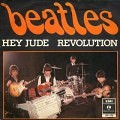



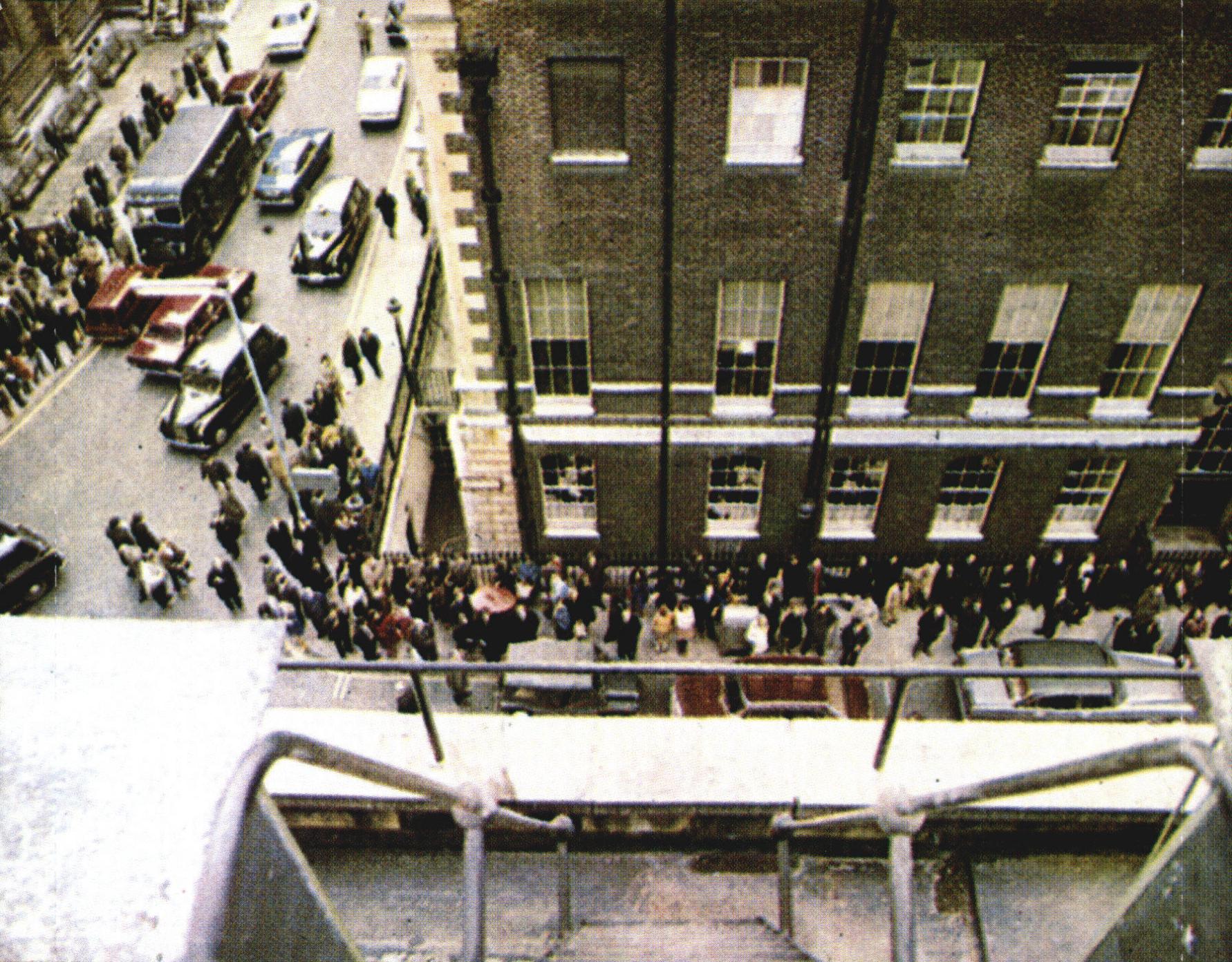
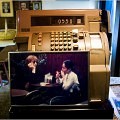

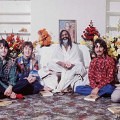
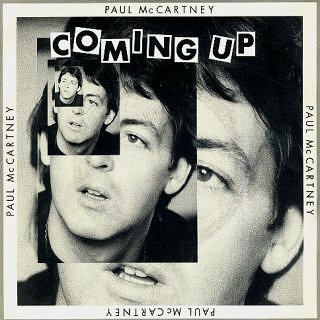

I’m thrilled to see it validated like this. I listened twice last night before it was taken down from YouTube (anyone have another link?) and it knocked me out. Reading your post, when you initially debunked the siren effect, my heart sank, because it rang all too true and I was sad that I let my ear be fooled. Damn you!
Very interesting theory on Revolution Take 20. My website has gone into overdrive since I posted this at the weekend. I was like yourself, convinced that it was genuine, and was a wee bit put out when some people suggested it may have been a fake. I still think it is the real deaL, but my glass has always been half-full anyway. I think it sounds magic!
http://philspector.wordpress.com
Hey Dullblog is a great name for a blog by the way. I wish I’d thought of that one.
well, gee, I got here a bit late and can’t hear the disputed clip (until someone, hopefully, is able to re-post the clip). Very disappointing, as I’m a huge beatle fan, dating back to 1964 when I first heard “I Want To Hold Your Hand” on my transistor radio”, and my life was forever changed.
Having said that, I work in the world of audio and video editing, and I can say that it is very easy to deceive the listener as to the authenticity of an audio clip. If, as you say, the elements- such as sirens, etc- that appear on the disputed clip are to be found on other archival recordings available to the public…it is very easy to combine the various components convincingly into a new (inauthentic) version that is not a result of Abbey Road sessions. In the course of my day-to-day work I routinely alter audio (for instance, a voice-over recording is found to contain mistakes, or a script is changed after a narration recording) to create a different audio track from the original. I can change a “plural” to a “singular”, replace the word “a” with “the”, and so forth. I’ll remove an incorrect word and replace it with the correct word found elsewhere on the tape. My point is it is very easy to replace, swap, eliminate, re-combine elements that exist on a recording to create a new “reality”.
Just sayin’…
Devin, this is just killer research and I thank you for it.
What it says to me strongly is that EMI should release all the material left in the vaults in unadulterated form. The Beatles’ artistic legacy is much too important for there to be any possibility of manipulation–and the technology to do so will only get easier and more widely available.
The motivations for manipulation could be benign (somebody playing around), or malignant (somebody trying to pass off fake as real), but I can’t see it getting less tempting–especially given how much “heat” this new Beatles track has created.
Obviously EMI won’t do this–it would be totally against how they’ve run the catalog for the last 40 years–but unless we want to consign future listeners to a take-by-take version of the Shakespeare/Bacon debate, opening the vaults and establishing the canon once and for all seems like a good idea. And frankly, with the Boomers where they are demographically, they’d make the most money now, too. (Or would’ve, six months ago.)
Lewisohn: “One of the session’s tape boxes details “vocal backing mama papa”. This was not a guest appearance by the Mamas and the Papas, however, rather a description of a persistent backing vocal (actually “Mama … Dada … Mama …Dada … Mama … Dada”) sung by Paul McCartney and George Harrison dozens upon dozens of times towards the end of the ten minute recording – but therefore cut out of the truncated version which appeared on the LP.”
More here: http://wogew.blogspot.com/2009/02/new-revolution.html
Mike is right that we may be seeing a whole new can of poison worms just opening. But we’ve asked for it.
Of course, vide bcelaya, my conclusion is qualified by the presumption that many of the sounds themselves could have been replicated or switched around by fakers. Even I can do this sort of thing at a primitive level. That kind of trickery may be difficult to detect, but anyone with skill can perpetrate it.
But remember, the qualification is qualified in a major way by the number of chat bits and musical sounds that are unmistakably genuine and previously unheard. Debate the whole, but some of the parts are definitey for real.
What I find more impressive, in a way, and certainly tougher to explain, is how the fakers knew about the “mama-dada” refrain. As I noted, neither Lewisohn nor anyone else mentions such an overdub being attempted or mixed in. Yet it’s there on the new Take 20 RM1, and seems to dovetail with John’s reference to “mommy-daddy” voices on the Yoko tape.
Now, it could be that someone took his reference and invented the “mama-dada” to retroactively “explain” John’s “mommy-daddy” voices — even being so subtle as to alter the parental designations just slightly, lest the subterfuge seem TOO perfect. But then, wouldn’t the success of the ruse then depend on some sucker like me uncovering a passing reference on a dull piece of tape no one listens to, solely to work up a fanciful theory to validate the fake?
Maybe someone can cut a straighter path through these thickets than the one I’m on. But I think the kind of ouroboros trickery we’re presuming would involve not just superior sound-editing skills, but the six-moves-ahead thought processes of a master chess player.
Which is not impossible — but I wonder if it falls on the wrong side of Ockham’s razor. Might there come a point at which genuineness becomes the SIMPLER explanation?
As of tonight, you can still download or stream it here, by the way:
http://nevergetoutoftheboat.blogspot.com/2009/02/beatles.html
So much for my “killer” research … Thanks, Wogew, for pointing out what was right in front of me. Though humbled by my selective blindness, I still feel the matter is open …
There is a bit towards the end that sounds like a terrible John spoken impression — much like their Yellow Sub cartoon voice stand-ins.
But, I do think that there is a chunk of truth at the core. I subscribe to the theory that “they could not help themselves and put their own fingerprints on what is by itself a great find”. But maybe it is all authentic: vanilla un tweaked.
Hell, maybe Sir Paul leaked it. If he did, the move is brilliant beyond words.
Prof, that is EXACTLY what I heard too, and what made me think “outfake.”
So you’re saying that the base track is real, but that whoever leaked it inserted something? If so, that’s a really horrible development.
I personally think that the base track came out of the Dakota.